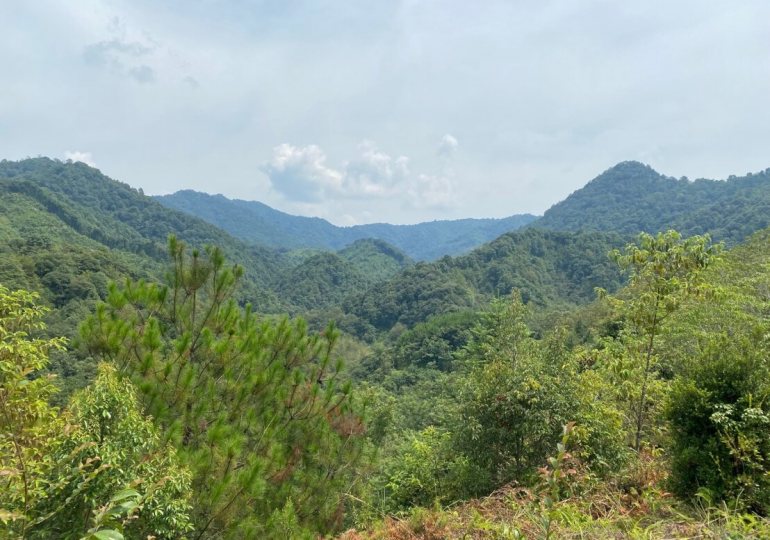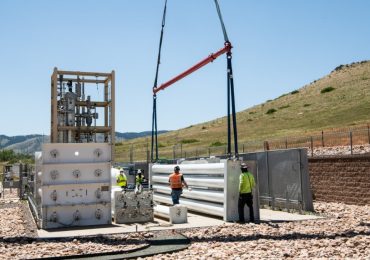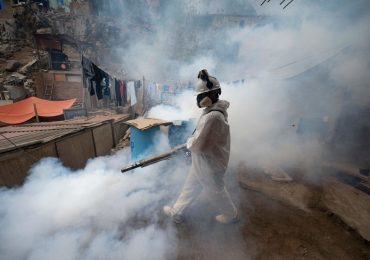In this new post, the group – PhD students at the German Centre for Integrative Biodiversity Research (iDiv), Halle-Jena-Leipzig, Germany – discuss their experiences working on the BEF-China experiment, the joys of fieldwork, and what the future holds for them.
Profile
We are a group of PhD students—at the German Centre for Integrative Biodiversity Research (iDiv), Halle-Jena-Leipzig, Germany—interested in diverse facets of Biodiversity-Ecosystem-Functioning (BEF) research in forests. While Pablo and Lena are interested in the effects of diversity on trees and their functioning, Julia and Michael aim to study how tree diversity modulates the relationships between plants and other organisms (Julia focuses on herbivores and Michael is interested in the endophytes living in leaves). Further, Henriette is studying tree diversity effects on soil organisms and functioning.
Given the strong impact of human activity on ecological communities, often leading to the loss of species, we believe that studying the interactions between species and their effect on the functioning of ecosystems is crucial to better understand the importance of biodiversity. In natural forests, it is very difficult to separate between the effect of diversity and confounding variables and this is why we study the diversity effects in such a special experimental setup: the biggest tree diversity experiment within a network of tree diversity experiments (TreeDivNet)—the BEF-China experiment.
The current questions we want to address in our work depend on the subproject, but, in every case, we want to understand how the diversity of woody species in forests influences different specific aspects of ecosystem functioning. For example, Julia is interested in the mechanisms by which diversity on different trophic levels influences each other, e.g. how shrub leaf damage is regulated by tree, shrub, microbe, herbivore, predator and parasitoid diversity. Another example is the case of Henriette, who is studying how understory shrubs induce the structural belowground complexity and how that affects microbes and soil functioning on a small scale.
Where in the world are you?
Currently, we are working in a tree diversity experiment located in Xingangshan (BEF-China), in Jiangxi province, Southeast China. Specifically, the experiment is located in a subtropical region dominated by evergreen broad-leaved forests with a unique evolutionary history where certain tree lineages have radiated enormously. These subtropical forests hold a large number of woody species growing naturally and, therefore, provide a unique setting to go beyond in the study of woody species interactions. In the experiment, local tree species were planted in plots with different levels of diversity: seven levels of tree species richness (0, 1, 2, 4, 8, 16 and 24 tree species) combined with four levels of shrub species richness (0, 2, 4, 8 shrub species). Since the planting date was 2009, it already feels like a “real forest” by now, covering the hills right next to the growing town and quarry.
Despite the differences among our subprojects, in this field season, we are all focusing on studying the interactions between trees and shrubs and their effects on ecosystem functioning. To achieve this, we are sampling shrubs and the trees surrounding them in different plots varying in tree diversity and composition. In this setting, among other things, we are measuring the size of individual trees and shrubs, collecting leaves to measure various leaf traits and assess leaf herbivory and fungal infestation, and taking soil cores to study the activity of soil microbial communities. We hope that this will help us to answer the different questions of our specific subprojects.
We are fascinated by the natural diversity of tree and shrub species in these ecosystems. While we are all coming from temperate latitudes where environmental filters like cold winters and seasonal droughts limit the number of woody species, we are impressed to encounter forests with hundreds of woody and, especially, to see that some common genera in temperate forests, such as Quercus (oaks), are so diverse in this biome. On top of this, the experiment itself is fascinating by its design, its size and its organization—you feel almost like being in a young forest, but every single one of the more than 100,000 trees and 45,000 shrubs were cultivated, planted, and labeled solely for scientific purposes!
Tips for fieldwork
Despite working within an experimental setup, our 20-hectare field site is dominated by slopes. That is why, moving within the experiment, finding our target trees and shrubs among the naturally regrowing plants is the first challenge to overcome. Luckily, we have local helpers to show us the sometimes hidden pathways between different plots. Since we are a big group of PhD students, student helpers, and supervisors, communication across the vast area is challenging—often with no reception—and walkie-talkies were needed. In the case of leaf collection, an additional challenge is the difficulty in accessing some canopies, especially for those trees that, despite their relatively young age, reach up to 20m in height but are too thin to climb. The use of ladders and long leaf cutters are part of our essential equipment in the field. In addition, for soil core collection we are limited by the weather, as wet soil after rain makes it impossible—waiting for dryer conditions is the only option to overcome this. Lastly, there are mining activities near the experimental site—sometimes we have to disrupt our sampling because the mining company schedules blasts and it would be too dangerous to stay in the field.
Being able to work outside is something we love, and, despite the heat and humidity, we enjoy it better than sitting at desks all the time. What we enjoy most is the combination of physically demanding work with mental challenges. We feel that fieldwork allows us to have time to better “understand” our study methods and objects (in our case the trees, the shrubs, the herbivores or the soil communities, among others) and is a crucial phase of the research process that will help us to interpret our results in the future. When you stand among the trees, catching your breath from the steep and slippery path, feeling the mixture of sweat, rain, sweat, mosquito repellent, and sweat below your backpack, listening to the swelling and subsiding sounds of cicadas and other invisible insects, merged with birdsongs, it is a completely different (of course subjective) impression than reading the plot measurements of slope, soil type, tree height, insect community etc. in a datasheet.
While we are only some of the PhD students involved in our graduate school and we organized a punctual joint field sampling campaign due to logistic reasons, there are many researchers from China who are working in the field site during the whole year and belong to our graduate school or to the BEF-China platform. Coming here is helping us to establish contacts with our Chinese partner PhD students and finding different ways of collaborating and sharing data. They also help to overcome the language barrier between us and local helpers, some of whom have worked on the project since its beginning. No doubt that this is really motivating for us, as we are in the first steps of our research career.
The future
We all have different ideas of what we want to study in the future. For instance, Pablo aims to understand the adaptative value of intraspecific responses of plants to adapt to the environment and biotic interactions jointly, and that is why he would like to work along environmental gradients in the future. In the case of Lena, she is interested in climatic extremes such as drought events and she would like to study if tree species diversity can mitigate the drought effects in forests worldwide. As for Michael, he would like to take his research to multiple scales by studying leaf-microbiome interactions across different biomes or within single biomes spread worldwide such as tropical rainforests. Nevertheless, we are all interested in the diversity effects in forests and we all would like to consider greater spatial scales and environmental conditions in our future research. That is why, we hope we can find collaborations among us in the future to contribute to understanding how biodiversity modifies ecosystem functioning in forests.










